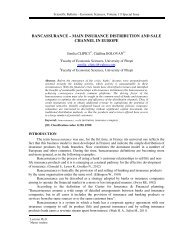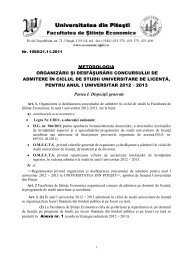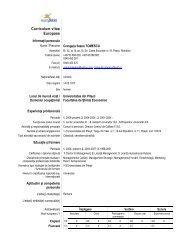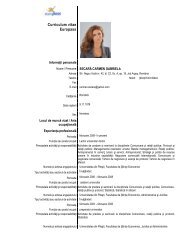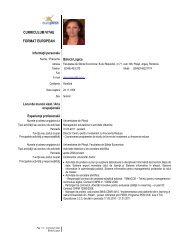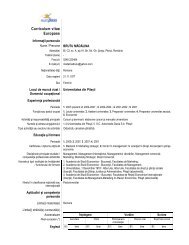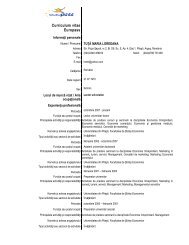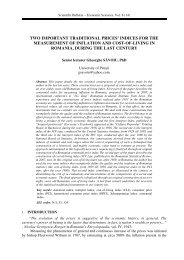buletin Åtiin ific - Facultatea de Stiinte Economice - Universitatea din ...
buletin Åtiin ific - Facultatea de Stiinte Economice - Universitatea din ...
buletin Åtiin ific - Facultatea de Stiinte Economice - Universitatea din ...
- No tags were found...
You also want an ePaper? Increase the reach of your titles
YUMPU automatically turns print PDFs into web optimized ePapers that Google loves.
The economic equilibriumBecause the firm imperfect competitive has a downward-sloping <strong>de</strong>mand curve, thismeans that R m < P. Because price is above marginal cost for profit – maximizing, the firmreduces output below the level that would be found in a perfectly competitive industry.Fig. 4. Producer equilibrium in the short-run: average dataP, R m16515013512010590756043,33015TP = 128a) Perfect CompetitionE CC mACD=P=R m0 1 2 3 4 5 6 7 8 9 10 11 QQ optimP, R m16515013512010590756043,33015TP = 197b) Pure MonopolyER mC mD = PAC0 1 2 3 4 5 6 7 8 9 10 11 QQ optimP, R mc) Monopolistic CompetitionP, R md) Oligopoly16515013512010590756043,33015TP=141,5E CC mACR mD =PVm16515013512010590756043,33015TP = 160ER mC mACD = P0 1 2 3 4 5 6 7 8 9 10 11 QQ optim0 1 2 3 4 5 6 7 8 9 10 11 QQ optimOur analysis shows how the monopolist reduces the output and raises the price, therebyproducing lees than would be forthcoming in a perfectly competitive industry. To see how andwhy monopoly keeps output too low, imagine that all money votes are distributed properly andthat all industries other than one are perfectly competitive, with C m equal to P. In this world,price is the correct economic standard or measure of scarcity: price measures both the marginalutility on consumption to households and the marginal cost of producing goods by firms.Economists measure the economic form of inefficiency in terms of the <strong>de</strong>adweight loss;this term signifies the loss in real income or consumer and producer surplus that arises becauseof monopoly, tariffs and quotas, taxes, or other distortions (4).5. Interaction of all Market in General Equilibrium. All these processes are going onsimultaneously. These different activities do not go on in<strong>de</strong>pen<strong>de</strong>ntly, each in its own littlegroove, careful not to get in the way of the others. All the processes of supply and <strong>de</strong>mand, of38




